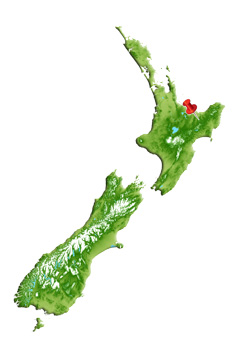Te Urewera Mainland Island
 The project involves a large area of forest set within a larger area of forest. Except for weka, Te Urewera Mainland Island contains the full complement of forest birds surviving on the North Island mainland.
The project involves a large area of forest set within a larger area of forest. Except for weka, Te Urewera Mainland Island contains the full complement of forest birds surviving on the North Island mainland.
Vision
To acknowledge and nurture the mauri or life-force of the northern Te Urewera ecosystem
Location
Te Urewera Mainland Island is accessed via the Waimana Valley at the northern end of Te Urewera National Park.
Area
The operational area of Te Urewera Mainland Island sits within the rohe of Ngai Tuhoe iwi. Tuhoe are intricately connected with the land and its values, and are therefore a vital component in the ongoing success of the project.
Te Urewera National Park (212 673 ha) is part of the largest extant tract of native forest in the North Island.
Physically, the land is characterised by ridge after ridge of bush-clad ranges, rising from valley floors of significant rivers to over 900 m above sea level. The vegetation is classed as semi-coastal lowland forest, and largely comprised of rimu/tawa forest.
Partly as a result of its size and management history, northern Te Urewera contains an assemblage of flora and fauna as complete as any in the North Island. This assemblage includes a number of rare and threatened species, such as mistletoe, tusked weta, kereru, karearea (falcon), kokako, kaka, kiwi, whio, long-tail bats and short-jawed kokopu. Most of these species require some form of active management to prevent their numbers diminishing.
Organisations involved
The Department of Conservation, Environment Bay of Plenty, Forest and Bird.
Management history
Surveys in the late 1980s and early 1990s indicated that the forests of northern Te Urewera housed the largest known population of North Island kokako, but populations were found to be declining at an alarming rate. Protection of nesting kokako in the form of possum trapping was instigated by DOC staff in the early 1990s and this work served as the precursor for the establishment of TUMI.
Access
The turnoff into Bell Road from State Highway 2 is one of the main access routes to this part of the park. The road travels about 30 km up the valley to the Matahi Valley Road end.
